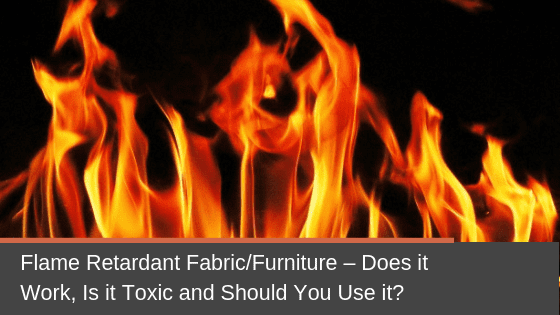There’s a lot to consider when you’re purchasing new office furniture: design, quality, durability, comfort and, of course, safety. On the safety front, you might be wondering about the pros and cons of using fire-retardant furniture in your office.
A few decades ago, if you asked the experts whether you should use flame-retardant furniture and fabrics, the answer would likely have been yes. Today, the answer is more complicated. In this article, we’ll tackle a few basic questions to help you make an informed decision.
What is Flame Retardant Fabric?
Fire retardant fabric is material that, you guessed it, is slow to catch fire and burn. Some fabrics are more flammable than others; any fabric that’s used to cover furniture, windows, walls or ceilings has to meet strict regulations and is tested for its flammability.
Certain fabrics are naturally fire resistant because of their natural properties. For instance, wool is considered the most fire-retardant natural fibre because it’s difficult to ignite. And acrylic, polyester and nylon are also naturally fire retardant because they catch fire at a much higher temperature than natural fibres such as cotton and linen.
These are known as inherently flame-retardant fabrics and are less likely to have flame retardants added to them.
But other types of fabric need to be chemically treated to be fire retardant. They’re either treated with a fire-retardant back coating or dipped in a chemical solution that gets absorbed into the fabric and creates a barrier between the fibres and the flame.
Is Flame Retardant Furniture Effective?
Upholstered office furniture has long been viewed as a fire hazard. It’s often made with wood and flammable foam cushioning that when ignited produces toxic fumes and flames that are hard to extinguish. Because of that, strict flammability standards were put in place in the mid-1970s that led to the widespread use of chemical flame retardants by furniture manufacturers.
California laws set the benchmark for furniture flammability standards across the industry. And in the past, fire retardant chemicals were the only way manufacturers could ensure their products met those stringent regulations.
But in recent years, there’s been a growing debate about how useful these chemicals actually are. While fire safety continues to be a severe concern, scientific research has shown that when added to furniture, flame retardant chemicals weren’t beneficial. On top of that, other studies have shown that fire retardant chemicals may also be hazardous to our health.
How Toxic Are Flame Retardant Chemicals?
There’s growing evidence that flame retardants can cause serious health problems. Diabetes, neurobehavioral and developmental disorders, cancer, reproductive health issues and thyroid problems are all associated with exposure to these chemicals.
A Canadian study by EDAction concluded that everyday products like furniture and electronics had been allowed to become sources of “long-lasting exposure to toxic chemicals.”
The report also cites federal data showing that 92 percent of all Canadian women tested had toxic flame-retardant chemicals in their breast milk. And all Canadians tested, including children, had some form of flame-retardant chemical in their bodies.
We are exposed to flame retardants in a variety of ways. They make their way into the air we breathe and into dust that gets into our bodies through our skin or when we touch our hands to our mouths.
Many flame retardants have been removed from the market or are no longer produced. However, because they don’t easily break down, they can stay in the environment for years. They can also build up in humans and animals over time.
Can You Find Furniture That is Healthy and Safe?
The short answer is yes. The push for increased fire safety and environmental health is a balancing act between protecting people from fire-related injury or death and the harmful effects of toxic chemicals. But the good news is there is a growing list of healthier options.
Progressive suppliers like Haworth and Humanscale are either limiting their use of flame-retardant chemicals or, in some cases, getting rid of them altogether.
The key is ensuring that the furniture you buy adheres to industry standards. To check the product’s safety, the Association for Contract Textiles (ACT) has set independent guidelines for various performance and quality indicators, including fire retardancy.
And if you want to avoid flame-retardants, check the furniture’s label or tags for the list of chemicals used in its manufacturing.
In 2014, a list of corporate and government furniture buyers pledged only to buy furniture with no chemical flame retardants. That same year, California changed its furniture flammability standards, making it easier for companies to meet the regulations without having to use harmful flame-retardant chemicals.
So, as a result of the new rules and growing consumer demand for healthier alternatives, it is possible to find a wide selection of office furniture that is both fire safe and fire retardant free.
Want to read about other office furniture industry trends? Check out our Office Trends to Know Guide today!
Cory Porteous
Director of Marketing & Inbound Business Development
Office Interiors



